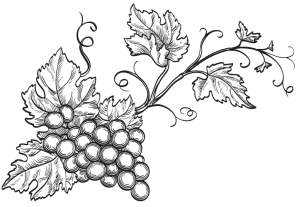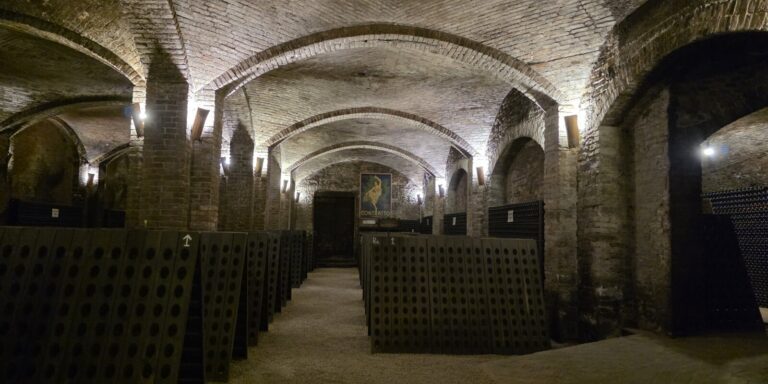
Founded in 1867 in Canelli, Piedmont, Contratto is a cornerstone of Italian sparkling wine heritage. This is Italy’s oldest producer of traditional method (metodo classico) sparkling wines, and the very first to release a vintage metodo classico—back in 1919. At a time when most Italian sparkling wine was made with the simpler tank method, Contratto was already embracing the Champagne-style second fermentation in bottle. Today, their wines are still crafted with the same patient, meticulous approach—aged for years on the lees in ancient cellars, hand-riddled, and disgorged by hand.
What makes Contratto truly extraordinary, though, is not just what’s in the glass—it’s where that glass comes from. The winery’s dramatic cellars, tunneled deep into the tuff hillside beneath Canelli, are part of a UNESCO World Heritage Site: “The Vineyard Landscape of Piedmont: Langhe-Roero and Monferrato.” These cathedral-like caverns, reaching depths of 32 meters underground, provide the perfect natural conditions—cool and stable temperature, high humidity—for the long, slow aging their wines require. Walking through these candlelit tunnels lined with pupitres and dusty bottles is like stepping back a century. It’s a physical reminder of how intertwined wine and culture are in this region.
Contratto’s sparkling wines—Brut, For England, Millesimato, and Pas Dosé—are made from Pinot Noir and Chardonnay grown in high-altitude vineyards in Alta Langa, where the cool climate preserves freshness and elegance. These are wines with serious structure and complexity, often rivaling top Champagne. “For England,” their driest style, was originally crafted for the British market in the early 20th century and is still made today with a distinctive precision and racy acidity.
Alongside their sparkling wines, Contratto has a long history of crafting refined, wine-based aperitifs that date back to the 1930s. Their Aperitif is a vivid, herbaceous liqueur built on a base of estate-grown Cortese wine and infused with 28 natural botanicals—spices, herbs, roots, and citrus peel—using a cold extraction method which preserves freshness. Its brilliant red-orange hue comes entirely from vegetable sources like beetroot and carrot, a rare commitment to natural ingredients in a category often filled with artificial colorants. The result is an aperitif that’s balanced, complex, and unmistakably artisanal—a perfect base for a spritz or to sip on ice.

